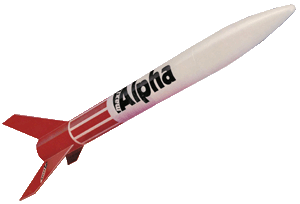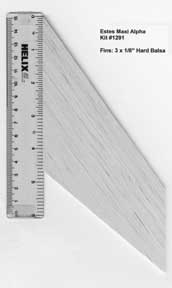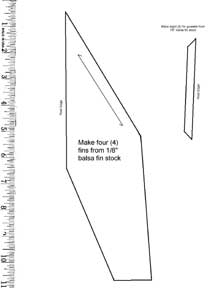YeahImJosh
Well-Known Member
- Joined
- Apr 27, 2011
- Messages
- 64
- Reaction score
- 1
Hello there, I am new here and going to attempt my first upscale project. I am going to be upscaling the Estes Nova Payloader (original red and white Nova). I have put toghether a list of supplies I am going to order and also have a few questions in regards to suggestions or recommendations. I am going to be upscaling the Nova from the BT-50 to BT-60, here are the parts list I have came up with thus far (all parts are from Semroc Astronautics)...
Main Body and Payload Bay
BT-60KF 16.1"
BT-60R 6.7"
T12 Light Protector Clear Tubing (for payload bay) cut to 6.7"
Body Connectors
Hollow Coupler BT-60 (JT-960C)
Tube Connector (For payload) BT-60
Nose Cone
BNC-60Y 7.25"
Launch Lug
1/8" x2.00" (x6 pack)
Screw Eye
1" (x6 pack)
The questions I have about the rest I need are these...
What size Chute Pak should I go with? 16" or 18" (or smaller/larger)?
I am going to go with balsa for the fins, which sheet thickness should I order to cut the upscalled fins out of?
The engine mount on Semroc I was thinking of going with was the #9 to BT-60 mount. It is 24mmx3.75" and I believe it comes with everything I am going to need to use 24mm motors. It looks like this is a full kit that included everything to assemble it and install it in the BT-60 body. Anyone know if this is correct? Does this sound like a good engine choice for the rocket?
Should I go with kevlar thread or elastic cord for the Chute Pak hook up to the body? I am not real sure there which is better.
This is where I am at right now, I do not think I am forgetting anything but if I am and you notice please advise. I am going to be looking into upscalled decals to match the originals after the build and paint is complete. I know there is a few members here that can sell those to me. Thanks in advance for the information! I am excited to give this build a shot and just want to make sure when I order I am getting what I need and doing it right!
Main Body and Payload Bay
BT-60KF 16.1"
BT-60R 6.7"
T12 Light Protector Clear Tubing (for payload bay) cut to 6.7"
Body Connectors
Hollow Coupler BT-60 (JT-960C)
Tube Connector (For payload) BT-60
Nose Cone
BNC-60Y 7.25"
Launch Lug
1/8" x2.00" (x6 pack)
Screw Eye
1" (x6 pack)
The questions I have about the rest I need are these...
What size Chute Pak should I go with? 16" or 18" (or smaller/larger)?
I am going to go with balsa for the fins, which sheet thickness should I order to cut the upscalled fins out of?
The engine mount on Semroc I was thinking of going with was the #9 to BT-60 mount. It is 24mmx3.75" and I believe it comes with everything I am going to need to use 24mm motors. It looks like this is a full kit that included everything to assemble it and install it in the BT-60 body. Anyone know if this is correct? Does this sound like a good engine choice for the rocket?
Should I go with kevlar thread or elastic cord for the Chute Pak hook up to the body? I am not real sure there which is better.
This is where I am at right now, I do not think I am forgetting anything but if I am and you notice please advise. I am going to be looking into upscalled decals to match the originals after the build and paint is complete. I know there is a few members here that can sell those to me. Thanks in advance for the information! I am excited to give this build a shot and just want to make sure when I order I am getting what I need and doing it right!








